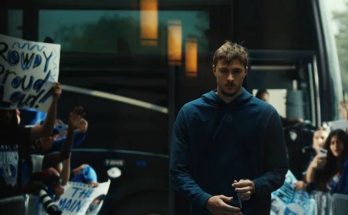The landscape of college football has undergone seismic shifts in recent years, with the introduction of Name, Image, and Likeness (NIL) policies and the liberalization of the transfer portal rules. These changes have fundamentally altered how programs recruit, retain, and develop players, forcing coaches to adapt to a new era where player mobility and financial incentives play a larger role than ever before. Oklahoma Sooners defensive ends coach Miguel Chavis has been at the forefront of navigating these changes, offering a unique perspective on how they impact not just his position group but the entire program.
Chavis, a former Clemson player who has built a reputation as a dynamic recruiter and developer of talent, understands that the modern college football environment requires more than just Xs and Os expertise. Coaches must now balance traditional responsibilities with the complexities of NIL negotiations and the ever-present threat of losing players to the transfer portal. For Chavis, the key lies in building genuine relationships with his players—relationships strong enough to withstand the temptations of greener pastures or lucrative NIL deals elsewhere.
One of the most significant challenges posed by NIL is the potential for disparity within a locker room. Not every player commands the same market value, and while some may secure six-figure endorsements, others may struggle to find deals at all. Chavis acknowledges that this dynamic can create tension if not managed properly. “You have to be honest with your guys,” he says. “Not everyone is going to get the same opportunities, but everyone has a role in this team’s success.” His approach is to emphasize team success as the ultimate driver of individual value. A player who contributes to a championship-caliber squad will naturally see their stock rise, both in terms of NFL prospects and NIL earnings.
The transfer portal, meanwhile, has turned college football into something resembling free agency. Players who feel underutilized or undervalued can seek new opportunities with relative ease, forcing coaches to constantly reevaluate their roster management strategies. Chavis admits that the portal has made retention just as important as recruitment. “You can’t just focus on bringing guys in; you have to make sure the guys you have feel valued and see a path to success in your program,” he explains. This means more one-on-one conversations, more transparency about playing time, and a greater emphasis on player development.
For defensive ends specifically, Chavis’s philosophy revolves around creating a competitive yet supportive environment. He wants his players to push each other while understanding that their collective success benefits everyone. In the NIL era, this can be a tough sell—after all, a player buried on the depth chart might see more financial upside by transferring to a school where they can start immediately. But Chavis counters this by stressing the long-term benefits of competing at the highest level. “If you’re going against the best every day in practice, you’re preparing yourself for the NFL,” he says. “That’s where the real money is.”
Recruiting has also changed dramatically. High school prospects now routinely ask about NIL opportunities during the recruitment process, and programs that can’t offer competitive packages risk losing out on top talent. Chavis believes that while NIL is a factor, it shouldn’t be the only factor. “We sell development, culture, and the chance to compete for championships,” he says. “NIL is part of the conversation, but if a kid is only coming here for the money, that’s not a sustainable relationship.” Still, Oklahoma’s robust NIL infrastructure, fueled by passionate boosters and a large fanbase, gives the Sooners an edge in attracting elite players.
Perhaps the most underrated aspect of the new era is the emotional toll it takes on coaches. The constant roster turnover, the pressure to secure NIL deals for players, and the need to rebuild relationships every offseason can be exhausting. Chavis admits that the job is more demanding than ever, but he embraces the challenge. “This is the reality now, and the best coaches will be the ones who adapt,” he says. For him, that means staying connected with his players beyond football—understanding their goals, their frustrations, and their aspirations.
Looking ahead, Chavis is optimistic about the future of college football, even as it continues to evolve. He believes that programs with strong leadership and a clear vision will thrive, regardless of how much NIL or the transfer portal changes the game. At Oklahoma, that vision is built on a foundation of excellence, both on and off the field. “We’re here to win, but we’re also here to help these young men become the best versions of themselves,” he says. “If we do that, everything else will take care of itself.”
In the end, the challenges posed by NIL and the transfer portal are just that—challenges, not insurmountable obstacles. For coaches like Miguel Chavis, the new era of college football is an opportunity to innovate, to build deeper connections with players, and to prove that even in a landscape dominated by money and mobility, the core values of the sport still matter. The Sooners’ ability to navigate these changes will depend largely on how well Chavis and his fellow coaches can balance the demands of modern football with the timeless principles of teamwork, development, and trust. And if his track record is any indication, Oklahoma’s defensive ends—and the program as a whole—are in good hands.


